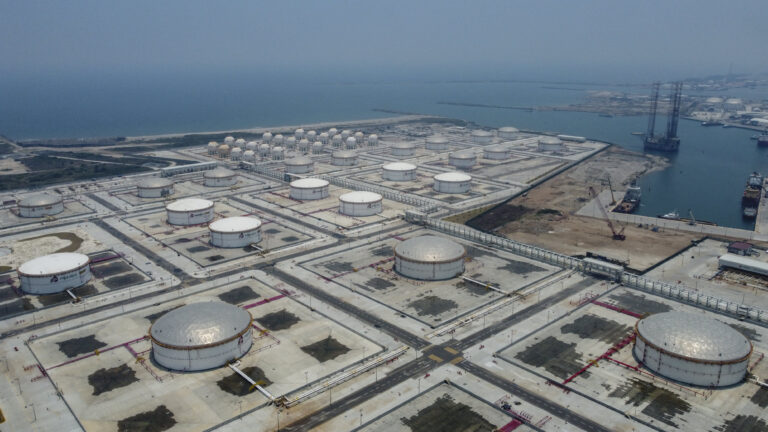An aerial photo taken on May 20, 2024 shows the Olmeca oil refinery, owned by Petroleos Mexicanos (PEMEX), which is part of the National Refining System (SNR) along with six other refineries in Paraíso, Tabasco, Mexico.
Yuri Cortez | AFP | Getty Images
Oil demand growth is expected to slow before peaking at nearly 106 million barrels per day by 2030, the international energy watchdog said in its latest medium-term market report, Oil 2024. That would be up from just over 102 million barrels per day in 2023.
At the same time, the IEA projects that oil production capacity will surge to around 114 million barrels per day by 2030, a staggering 8 million barrels per day above global demand projections.
The IEA said this would create levels of spare capacity not seen before except at the height of 2020’s coronavirus lockdowns.
It warned that these developments could have “significant consequences” for oil markets, including the U.S. shale industry and the economies of OPEC and other producing countries.
“As the recovery from the pandemic loses momentum, the transition to clean energy progresses and the structure of the Chinese economy changes, global oil demand growth is expected to slow and peak by 2030,” the IEA’s Birol said in a statement.
“The report’s projections, based on the latest data, indicate that a massive oversupply will occur over the course of this decade and suggest that oil companies need to ensure their business strategies and plans are prepared for the changes that are coming,” he added.
An oil pumpjack is seen near Calon Oil in Monahans, Texas on March 27, 2024.
Brandon Bell | Getty Images News | Getty Images
The report comes as momentum grows for cleaner, more energy-efficient technologies and countries seek to move away from fossil fuels, the burning of which – coal, oil and gas – is a major contributor to the climate crisis.
According to the IEA, the share of fossil fuels in the global energy supply has remained at around 80% for decades but is expected to fall to around 73% by 2030.
Despite the projected slower growth in oil demand, the IEA noted that without stronger policy measures or behavioral changes, crude oil demand is expected to be around 3.2 million barrels per day higher by 2030 than in 2023.
The company said the growth was mainly due to strong demand from Asia’s fast-growing economies as well as the aviation and petrochemical sectors.
But in developed countries, oil demand is expected to fall to below 43 million barrels per day by 2030, from nearly 46 million barrels last year, the IEA said. Excluding the coronavirus pandemic, the last time oil demand in developed countries was this low was since 1991, the IEA said.
In a landmark 2021 report, the IEA called for a push back against new oil, gas and coal development if the world is to reach net zero by 2050.
The report’s findings were widely criticized by several OPEC+ producing countries, which have argued for dual investments in hydrocarbons and renewable energy until green energy can unilaterally meet global consumption needs.
OPEC+ refers to an influential energy alliance led by Saudi Arabia and made up of OPEC and non-OPEC partners.

